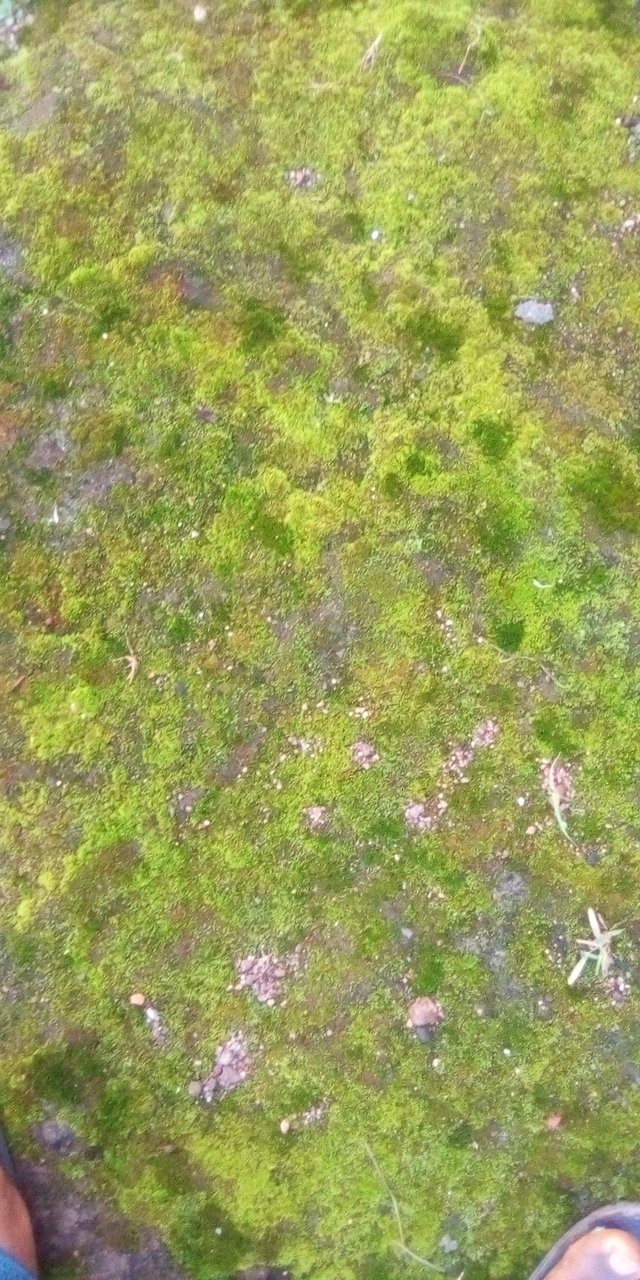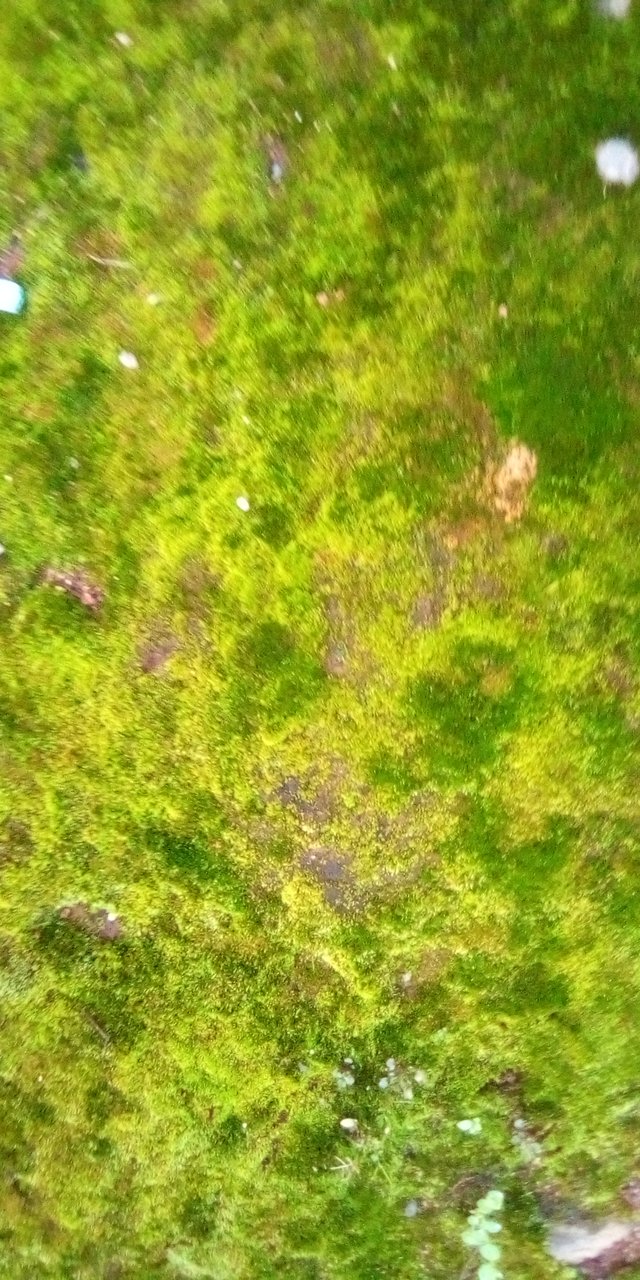Moss plant
Mosses are small, non-vascular flowerless plants in the taxonomic division Bryophyta. Bryophyta is now the formal name for mosses alone, whereas "bryophyte" refers to the informal group of liverworts, mosses and hornworts. Mosses typically form dense green clumps or mats, often in damp or shady locations. The individual plants are usually composed of simple leaves that are generally only one cell thick, attached to a stem that may be branched or unbranched and has only a limited role in conducting water and nutrients. Although some species have conducting tissues, these are generally poorly developed and structurally different from similar tissue found in vascular plants.Mosses do not have seeds and after fertilisation develop sporophytes with unbranched stalks topped with single capsules containing spores. They are typically 0.2–10 cm (0.1–3.9 in) tall, though some species are much larger. Dawsonia, the tallest moss in the world, can grow to 50 cm (20 in) in height. There are approximately 12,000 species.
Mosses are commonly confused with liverworts, hornworts and lichens.Mosses were formerly grouped with the hornworts and liverworts as "non-vascular" plants in a division, all of them having the haploid gametophyte generation as the dominant phase of the life cycle. This contrasts with the pattern in all vascular plants (seed plants and pteridophytes), where the diploid sporophyte generation is dominant. Lichens may superficially resemble

mosses, and sometimes have common names that include the word "moss" (e.g., "reindeer moss" or "Iceland moss"), but they are not related to mosses.
The main commercial significance of mosses is as the main constituent of peat (mostly the genus Sphagnum), although they are also used for decorative purposes, such as in gardens and in the florist trade. Traditional uses of mosses included as insulation and for the ability to absorb liquids up to 20 times their weight.

Preindustrial societies made use of the mosses growing in their areas.
Laplanders, North American tribes, and other circumpolar people used mosses for bedding.Mosses have also been used as insulation both for dwellings and in clothing. Traditionally, dried moss was used in some Nordic countries and Russia as an insulator between logs in log cabins, and tribes of the northeastern United States and southeastern Canada used moss to fill chinks in wooden longhouses Circumpolar and alpine peoples have used mosses for insulation in boots and mittens. Ötzi the Iceman had moss-packed boots.
The capacity of dried mosses to absorb fluids has made their use practical in both medical and culinary uses. North American tribal people used mosses for diapers, wound dressing, and menstrual fluid absorption. Tribes of the Pacific Northwest in the United States and Canada used mosses to clean salmon prior to drying it, and packed wet moss into pit ovens for steaming camas bulbs. Food storage baskets and boiling baskets were also packed with mosses.
Recent research investigating the Neanderthals remains recovered from El Sidrón have provided evidence that their diet would have consisted primarily of pine nuts, moss and mushrooms. This is contrasted by evidence from other European locations which point to a more carnivorous diet.
In Finland, peat mosses have been used to make bread during famines.
There is a substantial market in mosses gathered from the wild. The uses for intact moss are principally in the florist trade and for home decoration. Decaying moss in the genus Sphagnum is also the major component of peat, which is "mined" for use as a fuel, as a horticultural soil additive, and in smoking malt in the production of Scotch whisky.
Sphagnum moss, generally the species S. cristatum and S. subnitens, is harvested while still growing and is dried out to be used in nurseries and horticulture as a plant growing medium.
Some Sphagnum mosses can absorb up to 20 times their own weight in water. In World War I, Sphagnum mosses were used as first-aid dressings on soldiers' wounds, as these mosses said to absorb liquids three times faster than cotton, retain liquids better, better distribute liquids uniformly throughout themselves, and are cooler, softer, and be less irritating.It is also claimed to have antibacterial properties.Native Americans were one of the peoples to use Sphagnum for diapers and napkins, which is still done in Canada.
In rural UK, Fontinalis antipyretica was traditionally used to extinguish fires as it could be found in substantial quantities in slow-moving rivers and the moss retained large volumes of water which helped extinguish the flames. This historical use is reflected in its specific Latin/Greek name, the approximate meaning of which is "against fire".
Moss bioreactor cultivating the moss Physcomitrella patens
Physcomitrella patens is increasingly used in biotechnology. Prominent examples are the identification of moss genes with implications for crop improvement or human health and the safe production of complex biopharmaceuticals in the moss bioreactor, developed by Ralf Reski and his co-workers.
London installed several structures called "City Trees": moss-filled walls, each of which is claimed to have "the air-cleaning capability of 275 regular trees" by consuming nitrogen oxides and other types of air pollution and producing oxygen.